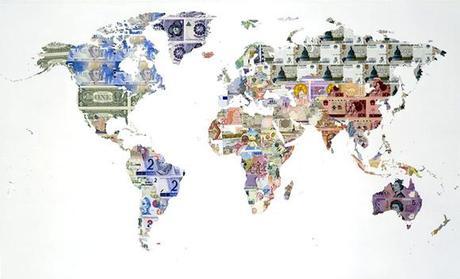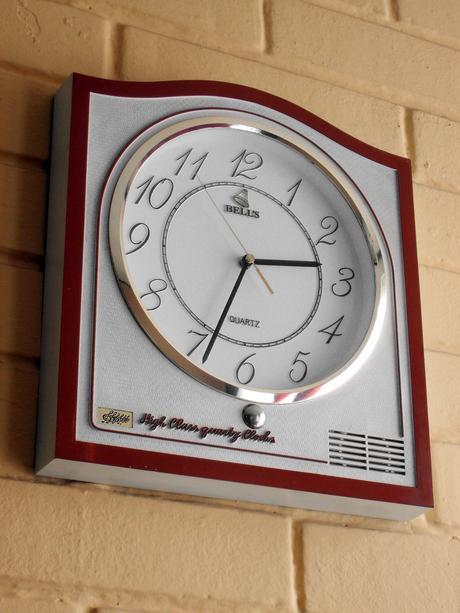
Before You Send Money
Check the fees. Bank drafts and debit cards seem to have the cheapest fees. If your fees tend to be high, try to only send home large amounts of money a couple times a year. You'll have to consider exchange rates as well. Though to be honest, unless you're sending home HUGE amounts of money, it probably won't matter that much. Here are 7 ways to send money home.
- Bank Drafts / Cashiers Cheques / Money Orders from Banks
- Bank Transfers to Different Banks
- Bank Transfers to the Same Bank
- Debit Cards
- Money Orders
- Paypal
- Country Specific information
ttompatz from Dave's ESL Cafe suggests money orders: the cheapest way to send money is to get a money order from a bank (also known as a bank draft or cashiers check)made payable to yourself and mail it to your home account with the endorsement "payable to the account of the payee only #xxx-xx-xxx-xxxx.
It is still safe and secure but will take 1-2 weeks to get to your account and your bank may hold the funds for up to 30 days pending clearance of the money order. It's available at most banks that offer foreign exchange and available in most "global" currencies" (dollars, pounds, euros). Fees are lower than bank transfers.
Canadian, UK, and US banks will treat it the same as any other check for deposit in regards to fees. Some banks will not even wait for it to clear (if it is drawn on a US bank). They will credit your account as soon as it is deposited. It is the same as a certified check but issued from the bank and not from a personal account.
 2. Bank Transfers to Different Banks
2. Bank Transfers to Different BanksYou usually need to have residency in the country you're living in in order to send bank transfers, though laws vary. In order to send bank transfers, you will need to know your home bank's information (SWIFT number, routing number, account number, address, phone, and fax of your bank). Fees vary and often you'll be charged by the bank you're sending money from and your home bank. It's fast and secure, but often expensive, and can be about $20 to $50.
Some banks often regular bank transfers (often called overseas remittance, plus or premimum accounts) at reduced prices. You often have to pay a monthly fee (about $10) to set up the account overseas and then your home bank will charge you a fee (about $20, depending on the bank) to receive the money.
 3. Bank Transfers to the Same Bank
3. Bank Transfers to the Same BankIf you're lucky to be able to open a bank such as Scotiabank or HSBC that has branches all over the world, then you could cut down on fees. Make sure you can open an account in the country you're going to. While it was easy to open an HSBC account back home, in Korea I was told I needed half a million dollars. In order to send bank transfers, you will need to know your home bank's information (SWIFT number, routing number, account number, address, phone, and fax of your bank).
Open a bank account in the country where you're living. Get a debit card that can be used overseas. Send that card to someone you trust back home. Once they get it, then activate it. Sometimes you can't do this and need to activate it in the country that you're living in.
If you do this than make sure you send it via secure post or don't have any money in the account before you send it. Deposit money into that account, then have the person you trust take out the money back home. You'll probably be charged about $3 to $5 for each withdrawal, but it's cheaper than doing a bank transfer.
 5. Money Orders
5. Money OrdersWestern Union, Moneygram, and Xoom are commonly used to send money. The money gets there fast, but fees are on the high side. You'll also need someone back home to pick up the money and deposit it in your account.
6. Paypal
Set up a Paypal account in the country you'll be living in. You'll need to link your overseas and home bank accounts. Check fees (they're usually about 2.9%) and exchange rates since they tend to be low. If your bank charges a flat fee it can be better to send a large amount through the bank rather than Paypal.7. Country Specific
China: With only your passport you can exchange up to $500 a day. Foreigners who want to exchange more than this will have to bring docs such as their passports, contracts, and letters from their employers. You can create a bank account for foreign currency and then exchange up to $500 a day and put it in that account, then transfer all of it at once back home. ABC (Agricultural Bank of China) and CUP (China Union Pay) seems to have less restrictions. Some people use Western Union even though it costs more but is less hassle. China Post is even better since it costs less than Western Union. Other peopel use their Chinese ATM cards back home to get money out. Be aware that legally only up to 70% of your salary can be converted to foreign currency. Chinese have less restrictions than foreigner, so if you have a chunk of change to exchange and don't want to jump through the hoops, ask a Chinese friend to help you. You can find more info at this post on Dave's.
Japan: Get a GoLlloyds account. It's quick, easy, and cheap. You can do it at the ATM or in the bank.You could also send money through Japan Post's international money orders. They have great exchange rates and only charge 2,000 JPY. With the post office you will have to fill out a form and wait about a week. Plus, you need someone back home to deposit the money order. Another option is through Remit. It made Gaijinpot news so seems to be a good deal. The Paypal option works in Japan too.
Korea: In Korea you can get an automatic overseas remittance through KEB. They set up an account for you, separate from your main account. You can access them through the bank, ATMs, or online. Any money transferred into this special overseas remittance account will be sent to the overseas account of your choice at the end of the business day. Fees are lower if you do this. Keep in mind that in Korea, you can only use ONE bank for overseas services, such as bank transfers or ATMs. KEB is the best one.
Mexico: The Paypal option works in Mexico too. (Thanks go to Samantha from Dave's ESL Cafe for this info). Open a Paypal account referencing your Mexican bank account. Then after your Mexican bank account is verified, add a US bank account to your same Paypal account. After that account is verified you should be free to upload money to your Paypal account from Mexico and withdraw it to your US account. You will have to do a bit of reading and research on the Paypal site if you aren't familiar with it. They will need your 18 digit CLABE from your bank.
